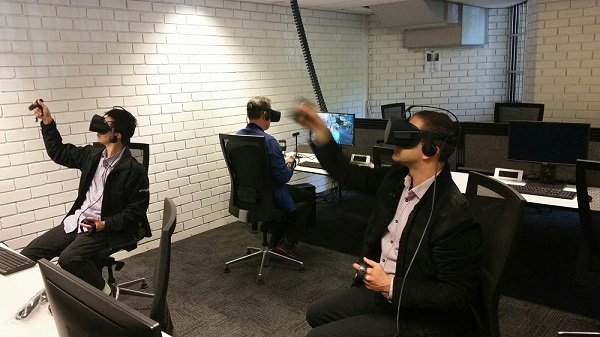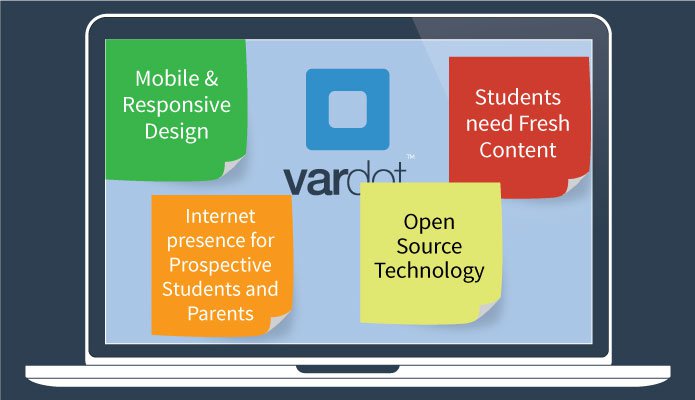- Solutions
- For Industry
- By Need
- Products
- VarbaseEnterprise CMS Distribution for Drupal
- Uber PublisherEnterprise Digital Media Platform Builder
- VardocDrupal Knowledge Base Platform
- Campaign StudioOpen Marketing Platform - by Acquia
- Open SocialSocial Business Platform - by Open Social
- Services
- Strategy
- Design
- Development
- Migration
- Support and MaintenanceSupport and Maintenance
- DevOps
- Digital Marketing

Datasheet

- Clients
- Ideas
- About
- Contact Us

3 Benefits Higher Education Gain From Disruption
We have witnessed a great deal of disruption across all socioeconomic industries in recent years. The academic or higher education sector, in particular, was not spared.
Disruptive technology and solutions have made the competition between over 28,000 universities across the world that wish to attract the most innovative and creative brains tougher than ever.
Universities such as Georgetown University reacted to the early disruption by taking proactive measures by building campuses abroad to promote their programs to an increasingly international market.
While internationalization by developing academic partnerships may have some benefits; there are arguments regarding the long-term sustainability of such ventures, especially with disruptive experience-centric trends on the way that can shake up the entire academic sector:
1. Academic Experiences
The diverse target audience has become a reality due to the existence of digital technologies that allow any person to gain access and even tailor their own academic/learning experience.
Accessibility-enabling technologies and solutions such as virtual classrooms and VR have been implemented in many universities to great success. A convenient cost-effective solution for both university and students.
VR allows for students with restrictive schedules to attend classes conveniently at any time they wish in an engaging manner.

Source: VU Dream
One particular provider of VR content and experiences to watch out for is Mental VR which has identified the gap and need for more interactive and immersive learning experiences in the Middle East.
The opportunity to create more dynamic and personalized curriculums based on real-time feedback and data analytics will provide higher-ed institutions that adopt this approach to gain a competitive advantage that appeals to the wide and diverse international market.
Your potential students (and current) are looking for a mobile-first, navigation-friendly user experience. This applies to how they consume their learning as well.
Make use of the constant digital communication and data exchange taking place between your students via personal devices in a bid to create a seamless collaborative learning environment on and off campus.
The potential benefits and possibilities to build upon this tech are endless.
2. Library/Information Services
Transforming your university’s impressive library of resources (e.g.) books, journals, and research papers into an accessible media gallery across all platforms for your students via a dedicated app or website is merely meeting the minimal expectations of a target audience that demands a user experience that delivers convenient satisfaction.
However, libraries are much more than bookshelves. Libraries were (still are) the ideal location to read for exams and finish assignments with colleagues.
Perhaps in the near future, universities can offer a dedicated library platform that enables students on and off campus to interact via more personalized collaboration tools that are built on already established solutions such as video conferencing giant Skype.
In the end, it’s all about building a digital experience that is personalized to your brand and more importantly, your students. Universities can transform their libraries and introduce online information services based on the wealth of available feedback from the existing student body.
A great and exciting example to monitor would be FutureLib; Cambridge University’s initiative to innovate their library and information services user experience by exploring the opinions, advice, and feedback generated from both students and staff expertise.
3. Personalized Recruitment
Prospect applicants are not limited to high school graduates that rely upon their tech-savvy to inform their decisions only. With disruptive digital tech impacting traditional jobs; professionals across the world are proactively seeking education to stay relevant.
Your target audience is more diverse than ever.
This fact emphasizes the importance of capitalizing on the personalization potential that new digital technologies afford higher-ed institutions to promote themselves and their story in a fashion that is relevant to their various target audiences.
Word of mouth remains the most effective tool to build up credibility and trust. Use personalized word-of-mouth stories across all available media platforms such as Snapchat, Twitter, LinkedIn, and Facebook. promote alumni stories and careers rather than simply celebrating a few alumni select.
A great example of how it’s done is the acceptance letters that the University of Wisconsin – Green Bay sent out to successful applicants via Snapchat.
Promote life on and off-campus; showcase the nightlife from students’ experiences, and promote stories about your alumni careers rather than celebrating a select few. Or, enable prospective students to consider applying to tour your university via VR.
Tomorrow’s students and user value education in an experiential manner. Building a flexible and sustainable digital experience that scales is imperative for higher-ed institutions that intend to remain competitive.
If you wish to learn how you can stand out and build the foundation for an effective digital experience; let us know. We’d love to help.
- VR
- Drupal 8
- Drupal
- Design & User Experience
- Higher-ed & Schools
- Marketing



